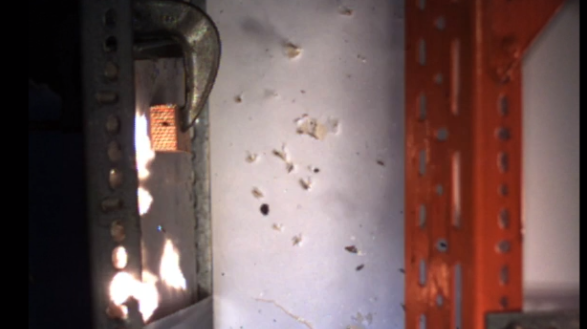
Researchers from North Carolina State University and the US Army’s Aviation Applied Technology Directorate have shown that a stainless steel composite metal foam (CMF) can offer better protection than existing armour materials at a fraction of the weight.
“Many military vehicles use armour made of rolled homogeneous steel, which weighs three times as much as our steel-CMF,” said senior author and professor of mechanical and aerospace engineering at NC State University Afsaneh Rabiei.

Discover B2B Marketing That Performs
Combine business intelligence and editorial excellence to reach engaged professionals across 36 leading media platforms.
“Based on tests like these, we believe we can replace that rolled steel with steel-CMF without sacrificing safety, better blocking not only the fragments but also the blast waves that are responsible for trauma such as major brain injuries.”
The CMF successfully blocked blast pressure and fragments at 5,000 feet per second from high explosive incendiary rounds that detonated just 18 inches away.
“In short, we found that steel-CMF offers much more protection than all other existing armour materials while lowering the weight remarkably,” said Rabiei.
According to Rabiei, the steel-CMF can provide ‘as much protection as existing steel armour at a fraction of the weight—or provide much more protection at the same weight.’

US Tariffs are shifting - will you react or anticipate?
Don’t let policy changes catch you off guard. Stay proactive with real-time data and expert analysis.
By GlobalDataThe researchers also compared the results with a computer model and found the results of the experiment and simulation matched closely. Extrapolating the data, they were able to predict how aluminium 5083 armour—an armour that is already on the market that has a similar weight and thickness to the 16.75mm steel-CMF—would perform against HEI rounds.
The model showed that the aluminium would stop fragments but buckle under the pressure, causing more damage to the panel and transferring large stress to soldiers or equipment behind the armour.
In contrast, the steel-CMF absorbed the energy from the blast wave and flying fragments through local deformation of hollow spheres, leaving the steel-CMF armour under considerably less stress.
Rabiei added that the lower weight of the armour would also ‘reduce vehicle weight significantly, improving fuel mileage and vehicle performance.’
The researchers have already tested the CMF’s performance against hand-held assault weapons, radiation, and extreme heat, but also plan to test the steel-CMF against improvised explosive devices (IEDs) and high-calibre mounted ballistics.
The paper, ‘A study on blast and fragment resistance of composite metal foams through experimental and modelling approaches’, was published in the Journal of Composite Structures.





